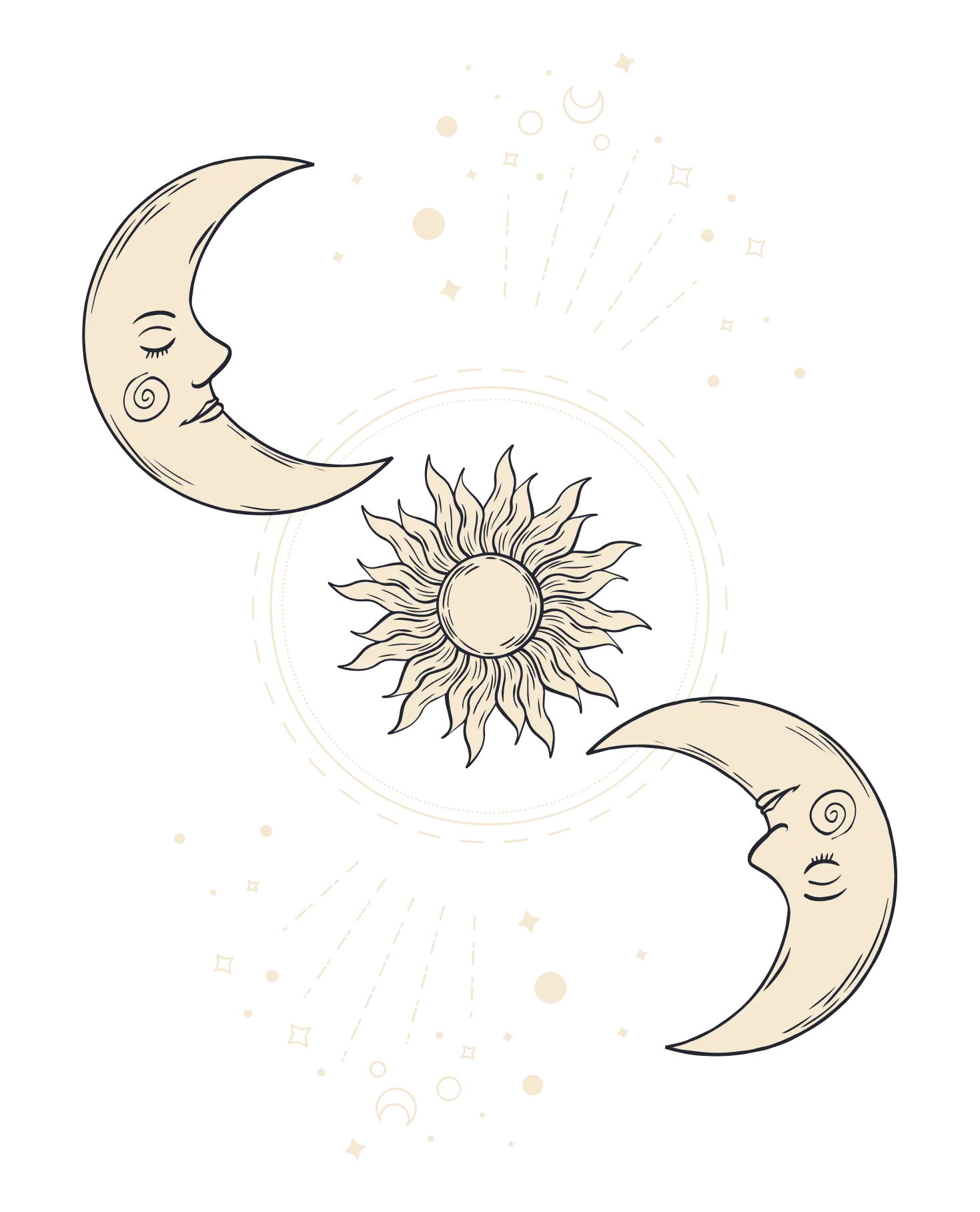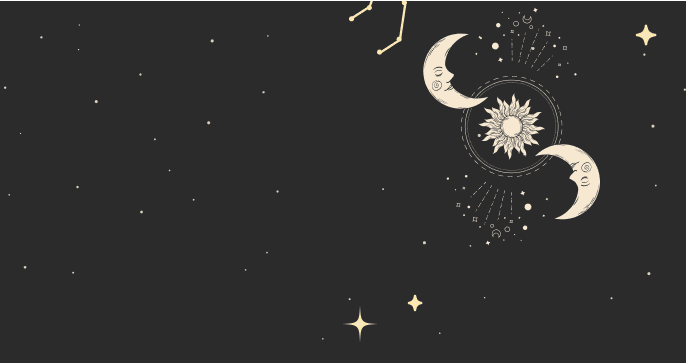Living with PMDD
There are rhythms within us that often go unnoticed—until they demand to be felt.
✨✍️ This article is part of our new MoonX Creators Program. Want to join and become an author? Learn more at https://moonxcreators.tilda.ws/
Living with PMDD is like moving through tides you didn’t ask for, shifting between clarity and overwhelm, calm and chaos. For years, I struggled to understand why my emotions seemed to turn against me like clockwork each month. It wasn’t just mood swings or irritability; it was a complete shift in my body, mind, and spirit. The weight of it was undeniable.
When I began tracking my menstrual cycle alongside the moon, it was as if I had found a missing puzzle piece. I started noticing patterns—certain moon phases seemed to amplify my emotions, while others brought more ease. This awareness didn’t erase the struggles of PMDD, but it gave me a rhythm to work with instead of feeling at war with myself. The moon wasn’t a cure, but it became a guide, a mirror reflecting the cyclical nature of my being.
Learning to live with PMDD has meant embracing multiple layers of support—lunar wisdom, mental health care, lifestyle changes, and deep self-awareness. This is the journey I want to share: how tracking the moon helped me better understand myself, and how honoring my cycles has been one part of a much larger healing process.
Premenstrual Dysphoric Disorder (PMDD) is often misunderstood, dismissed as “just bad PMS,” but the reality is far more intense. PMDD is a severe, cyclical mood disorder that arises in the luteal phase of the menstrual cycle, bringing waves of depression, anxiety, rage, and deep emotional distress. Unlike standard PMS, PMDD isn’t just an inconvenience—it can feel like a complete shift in self, an emotional and physical weight that descends each month, disrupting daily life, relationships, and mental well-being.
For me, PMDD felt like losing my center. The days leading up to my period became a time of heightened sensitivity, exhaustion, and emotional turbulence. It was as if a different version of myself took over—one I didn’t recognize and couldn’t reason with. And yet, when my cycle reset, the fog would lift, leaving me wondering if what I had just experienced was even real.
Being a stay-at-home mother with PMDD added another layer to this experience. There were days when the overstimulation of two small children felt unbearable, when the sound of their voices—though full of love—pressed against my raw nerves. There were times I felt the weight of guilt, wanting so deeply to be present and patient but feeling trapped in a body and mind that weren’t cooperating. The emotional swings, the exhaustion, the deep need for solitude while knowing solitude was impossible—it all compounded into something that felt both overwhelming and isolating.
But beneath the exhaustion and the guilt, I knew something deeper was happening. I wasn’t just managing my own emotions—I was breaking something, rewriting something. I was carrying the weight of generational cycles, of women before me who had suffered silently, whose struggles with mental health, motherhood, and self-worth had gone unspoken, unhealed. Their pain, their patterns, their suppression—it all lived within me, but I refused to let it end with me. The guilt I felt wasn’t just my own; it was ancestral, woven into my DNA, passed down through blood and unspoken words.
It was through my spiritual awakening that I found myself being called to the moon. It wasn’t something I set out to do; rather, it felt instinctual, primal, as if some ancient part of me recognized its reflection in the night sky. I began noticing its phases, feeling its pull—not just in the world around me but within my own body. My connection to the moon wasn’t just about PMDD; it was about motherhood, womanhood, and the cycles that govern both. The more I paid attention, the more I saw the patterns, the rhythms that had always been there, waiting to be remembered.
For as long as humans have gazed at the sky, the moon has been seen as a force of mystery, intuition, and creation. Ancient cultures understood the deep connection between the lunar cycle and the menstrual cycle—two rhythms moving in harmony, both spanning an average of 28-29 days. Women were once seen as embodiments of these natural cycles, their bodies mirroring the waxing and waning of the moon. But in modern times, this wisdom has been largely forgotten, buried under the weight of a world that demands linear productivity rather than honoring cyclical flow.
Much of this disconnection may stem from the shift away from natural timekeeping. Our current 12-month Gregorian calendar is a man-made system—out of sync with nature, forcing us into an artificial structure that disregards the organic cycles of the body and Earth. But there is another way to measure time: the 13-Moon Calendar, a system rooted in lunar cycles, with each month lasting exactly 28 days.
When I began tracking my cycle alongside both the moon and the 13-month calendar, I wasn’t looking for answers—I was looking for understanding. I noticed that my PMDD symptoms didn’t just arrive randomly; they often aligned with specific moon phases. Some months, my most difficult days would land near the Full Moon, when energy and emotions were heightened. Other months, they would hit just before the New Moon, when the world felt quieter, but my inner world felt heavier.
Patterns began to emerge. My body wasn’t just reacting—it was responding to a rhythm much older than me. A rhythm my soul had known long before this lifetime. This realization didn’t take my pain away, but it gave me a framework to work with. Instead of feeling like PMDD was an unpredictable force overtaking me, I began to see it as part of a greater cycle—one that, when understood, could be worked with rather than fought against.
I found that tracking my emotions and symptoms daily helped me see patterns I hadn’t noticed before. I could prepare for the days when PMDD would hit hardest, giving myself grace instead of frustration. I stopped expecting myself to have the same energy and patience every day. Instead, I started planning my life in a way that honored the shifts.
Honoring the Four Phases
• Menstrual Phase (New Moon Energy) – A time to rest, reflect, and release. I often wrote letters to the moon, set intentions for the new cycle, and used moon water in my tea or bath. Herbal allies like echinacea tea helped soothe period cramps and promote a sense of ease.
• Follicular Phase (Waxing Moon Energy) – A time of renewal. Herbal infusions like raspberry leaf, nettle, and red clover helped support hormonal balance.
• Ovulation Phase (Full Moon Energy) – My most social and outward-focused time. I used intuitive somatic movement to help energy flow freely and ease ovulation pains.
• Luteal Phase (Waning Moon Energy / PMDD Onset) – Sensitivity heightened. Herbal teas like chamomile, skullcap, and passionflower helped ease tension, while deep breathing and slow movements allowed emotions to move through me.
There is an ancient wisdom woven into the cycles of a woman’s body—one that has been buried by time, forgotten by modern life, yet still felt deep in our bones. Long ago, menstruation was seen as sacred, a time when women retreated, received visions, and connected to something beyond themselves. This was a time of rest, of reflection, of deep knowing. But in today’s world, that reverence has been stripped away, leaving many of us to suffer in silence, disconnected from the magic that was once honored.
For so long, I viewed PMDD as something that happened to me—something unpredictable, something I had to endure. But learning to track my cycle alongside the moon shifted that perspective. It didn’t take away the challenges, but it gave me a framework, a deeper understanding of the ebb and flow within me. The moon didn’t cure me, but it became a guide—a reflection of the cyclical nature of my body, my emotions, and my healing.
I have come to see my period as a portal—a time when cosmic guidance flows more freely, when my intuition is heightened, when my body asks for deep rest and stillness. I spend most of my periods in the shower, letting the water cleanse not just my body, but my mind. It is a time of surrender, a time when I allow the universe to speak to me in ways that are both primal and divine.
But the truth is, support is necessary. Not just for me, but for all women. We were never meant to navigate this alone. For those who struggle with PMDD, mental health, or the emotional depths that come with being a cyclical being, the need for understanding and care is real. As a stay-at-home mother, the weight of my cycle doesn’t just affect me—it affects my family, my home, my ability to show up as the mother I want to be. And yet, through all of this, I have come to honor my body, not resent it. I have learned that the struggles, though painful, have also been teachers.
This path has not been easy, but it has been transformative. And for anyone walking a similar journey, I encourage you to start simply: observe, track, and listen. Watch the moon, track your emotions, notice the shifts. Let yourself remember the wisdom that has always been within you.
You are not broken. You are not failing. You are moving through cycles as you were always meant to. And within those cycles, there is power, there is magic, and there is you.
Comments


Discover more fascinating insights and stay updated on all lunar events in the MoonX app.
Popular questions
EVERYDAY WELLBEING
Start Your Guided Cosmic
Journey with MoonX
Build out your own personalized spiritual practices with MoonX today
compatibilityhoroscopebirth chartmediate sleephealing soundjournaltarotgratitudereduce stress